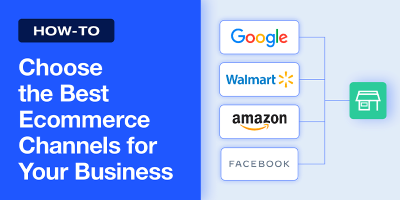Product returns are costly and can be an absolute headache to process, especially when they come in from multiple selling channels. They’re also pretty common, which means you need a strategy to reduce the number you receive and mitigate the impact they have on your business.
The National Retail Federation (NRF) reports that for every $1 billion in sales, retailers incur $165 million in merchandise returns. In 2022, U.S. consumers returned 16.5% of merchandise purchases, costing retailers an estimated $816 billion in lost revenue.
In this blog, we’ll cover how to reduce the impact returns have on your business. But first, you’ve got to face a cold hard truth—you’re probably never going to get your returns down to zero. There. We said it. With that out in the open, let’s see what you can do to get those returns as close to zero as possible.
#1 Create a more stringent return policy
If you favor the stick over the carrot, creating more rules around what, when, and how a customer can return items can be a solid method for prevention. However, depending on how Genghis you decide to go, this could be a detrimental move.
Nearly 90% of consumers say they’d be at least a little likely to stop shopping with a brand if it stopped offering free returns. Easy returns take the risk out of purchasing an item online, which is likely why more than 60% of shoppers seek out a business’ return policy before making a purchase.
Always make sure to check the laws where you sell before implementing a return policy. For example, the UK has a mandatory 14-day refund requirement.
Here are some common policies retailers implement to reduce the impact of refunds:
Specifying which products can be returned
One strategy many brands already employ is not allowing on-sale or clearance items to be returned. Another way to mitigate potential losses is to create rules around the condition an item should be in upon return. For example, retailers often do not allow undergarments to be refunded. Some items that are no longer in their original packaging can also be deemed refund-ineligible.
Use refund limits and in-store product exchanges
Another impact-reduction technique is to only offer a portion of the refunded item back in cash. Some retailers use a store credit system so that customers can only replace products with another product, keeping cash in the business.
Reduce the return time frame
It is common for retailers to implement a time-based return policy. The average return window for retailers is 30 days, and customers tend to take an average of 19 days to return an item.
#2 Optimize your product feeds
According to SaleCycle, nearly 65% of customers return items because they do not match the online description. Ensuring that data is accurate, up-to-date, and detailed helps customers make a more informed decision about their purchases.
For example, if you’re selling apparel online, there’s a ton of extra information you can add to your product listings:
- An information-rich and easy-to-read product tile. For example, “Black Hoodie” is not as informative as “Men’s Zip-Up Hoodie, Black, XL.”
- Special features about your products, like “waterproof,” “front pockets,” or “reflective.”
- Material types, such as cotton or polyester.
- Lifestyle images are essential for product categories like apparel.
- Pictures from multiple angles.
- If you’re selling on marketplaces like Amazon, make sure to submit an accurate size guide, and if you’re selling on your own website, include one there as well. One brand’s large can be another brand’s medium.
Using a feed management platform with powerful data transformation rules can help you optimize your product listings at scale for each sales channel.
#3 Leverage customer feedback and reviews
Allow customers to post product reviews! This helps you figure out what you should change in your listings to make things clearer. Pay attention to common comments or complaints customers voice about your products. It’s always a good idea to leave a section on your returns form for customers to leave written feedback about why they’re returning an item.
For example, if customers constantly leave reviews about how a pair of pants didn’t look the same as they did in the pictures, then it may be time to get higher-resolution images.
Reviews can be a huge help in reducing returns. For example, customers often help fellow shoppers make more informed decisions about which variant to purchase with comments like “get a size larger,” or “runs big.”
Allowing customers to post images in their reviews also helps give others a more realistic look at what a product is like in a natural everyday environment.
Finally, if your customers leave a lot of the same feedback or questions about your product, you should create an FAQs section. Taking the time to write out detailed responses shows your customers that you care about their concerns.
#4 Streamline order management
When an order arrives later than expected, it is more likely to be returned. About 11% of shoppers say they returned an order because it arrived late.
To reduce shipping delays, you can use software that streamlines order management with some key features:
Inventory buffers
Overselling happens when real-time inventory counts aren’t synchronized across your channels, leading customers to unknowingly buy out-of-stock products.
For multichannel merchants, carefully managing inventory counts across marketplaces is key to avoiding shipping delays caused by overselling. For example, suppose you’re selling plastic samurai swords on your website and three additional marketplaces and you only have two units stocked. In that case, those units can sell out through your website before you update the marketplace stock quantities. Marketplace customers could continue to purchase your swords, forcing you to cancel the orders after the transactions are complete.
Overselling is more likely to occur during a surge in product sales, such as promotional events, flash sales, or with your high-demand products. Since brands usually promote products during high-traffic shopping days and time-sensitive gift-giving events, customers are more negatively impacted by delays, making inventory buffers a crucial reputational safeguard.
Inventory buffers allow you to set a certain quantity of products to be reserved, so you can display less inventory than you have on hand. You could choose to mark your product “out of stock” on specific channels whenever your inventory dips below four units.
Order routing and splitting
Some merchants use multiple fulfillment solutions to keep orders moving. For example, they might ship bulky products from a warehouse, fast-moving products through Amazon Multi-Channel Fulfillment, and all other products through their ecommerce platform. Being able to automatically route and split orders to the preferred fulfillment solution is a great time saver.
With the right software, you can specify rules that direct order information to the appropriate fulfillment methods. Orders can be routed by brand, SKU, availability, custom labels, and other product data. These criteria can even be used to split line items from the same order to different fulfillment methods.
Automation and consolidation
Managing orders through different dashboards and sources is inefficient. Using FeedAMP in conjunction with an order management system (OMS) or other fulfillment providers lets you consolidate and streamline key ecommerce processes.
Rather than manually processing orders from each selling channel, you can automatically pull order information into FeedAMP at regularly scheduled intervals, which saves you time and reduces errors during fulfillment.
The right order management tech can also automatically retrieve return requests from major marketplaces like Amazon, Walmart, and eBay, and insert them directly into your OMS. This can be a huge time-saver for both you and your customers.
Find out how Feedonomics optimizes your product feeds and streamlines order management.

With its leading data feed management platform, Feedonomics helps brands, retailers, and agencies optimize and list products on hundreds of shopping destinations around the world. Learn more about our full-service solutions for advertising channels and marketplaces.



